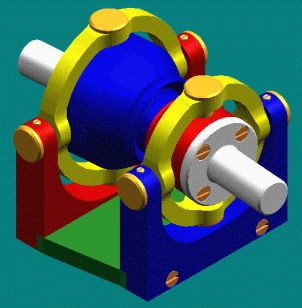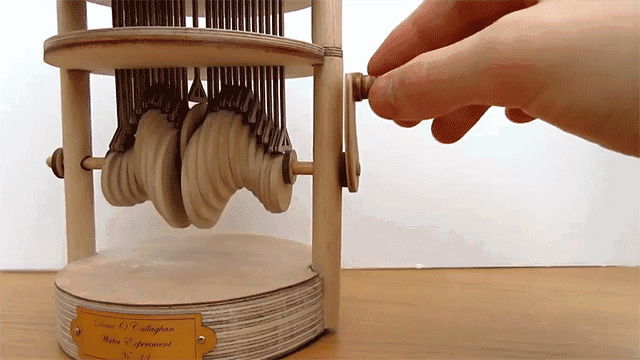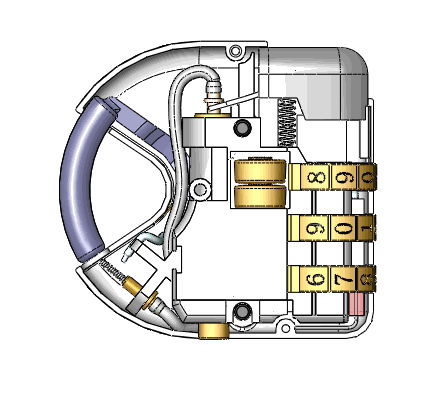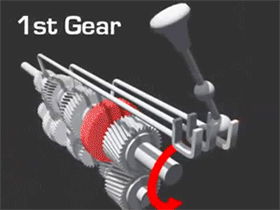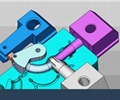| Model: | - |
|---|---|
| Brand: | - |
| Origin: | Made In China |
| Category: | Industrial Supplies / Machine Hardware / Mold |
| Label: | Hardware mould , Plastic mold , Die casting mold |
| Price: |
-
|
| Min. Order: | - |
Product Description
Summary of technical knowledge of plastic molds
The various tools and products used in our daily production and life, ranging from the base of the machine tool, the body shell, to a small screw, button and the shell of various household appliances, are all closely related to the mold. The shape of the mold determines the appearance of these products, and the processing quality and precision of the mold also determines the quality of these products. Because of the different materials, appearance, specifications and uses of various products, molds are divided into non-plastic molds such as casting molds, forging molds, die-casting molds, and stamping molds, as well as plastic molds.
In recent years, with the rapid development of the plastics industry and the continuous improvement in strength and precision of general and engineering plastics, the application range of plastic products is also expanding, such as: household appliances, instrumentation, construction equipment, automobile industry, Japan In many fields such as hardware, the proportion of plastic products is increasing rapidly. A reasonably designed plastic part can often replace multiple traditional metal parts. The trend of plasticization of industrial products and daily-use products is on the rise.
12. General definition of mold:
In industrial production, a variety of presses and special tools installed on the press are used to make metal or non-metallic materials into parts or products of the required shape through pressure. Such special tools are collectively called molds.
3. Description of the injection molding process
: Mould is a tool for producing plastic products. It is composed of several groups of parts, and there is a molding cavity in this combination. During injection molding, the mold is clamped on the injection molding machine, the molten plastic is injected into the molding cavity, cooled and shaped in the cavity, and then the upper and lower molds are separated, and the product is ejected from the cavity and out of the mold through the ejection system, and finally the mold is closed For the next injection, the entire injection molding process is carried out cyclically.
4. General classification of molds:
Can be divided into plastic molds and non-plastic molds:
(1) Non-plastic molds include: casting molds, forging molds, stamping molds, die-casting molds, etc.
A. Casting mold faucet, pig iron platform
B. Forging die car body
C. Stamping die computer panel
D. Die casting mold super alloy, cylinder block
(2) Plastic molds are divided into different production processes and products:
A. Injection molding mold TV shell, keyboard buttons (the most common application)
B. Blow Molded Beverage Bottle
C. Compression molding die bakelite switch, scientific porcelain dishes
D. Transfer Molded Integrated Circuit Products
E. Extrusion molding die glue hose, plastic bag
F. Thermoforming mold transparent molding packaging shell
G. Rotary forming mold soft rubber doll toy
Injection molding is the most commonly used method in plastic processing. This method is suitable for all thermoplastics and some thermosetting plastics. The number of plastic products produced is unmatched by other molding methods. As one of the main tools of injection molding processing, the injection mold is in terms of quality accuracy, manufacturing cycle and injection molding process. The level of production efficiency and other aspects directly affects the quality, output, cost and product update of the product, and also determines the ability and speed of the enterprise's response in market competition.
The injection mold is composed of several steel plates with various parts, and is basically divided into:
A Forming device (concave mold, convex mold)
B positioning device (guide post, guide sleeve)
C Fixing device (I-shaped board, code mold pit)
D Cooling system (water hole)
E Constant temperature system (heating tube, heating wire)
F Runner system (pump nozzle hole, runner groove, runner hole)
G ejection system (thimble, ejector stick)
55. According to different types of pouring system, molds can be divided into three categories:
(1) Large nozzle mold: The runner and gate are on the parting line and are demolded together with the product when the mold is opened. The design is the simplest, easy to process, and low cost, so more people use the large nozzle system to work.
(2) Fine nozzle mold: runners and gates are not on the parting line, generally directly on the product, so it is necessary to design an additional set of nozzle parting lines, the design is more complicated, and the processing is more difficult. Generally, the selection depends on the product requirements. Fine nozzle system.
(3) Hot runner mold: The structure of this type of mold is roughly the same as that of the nozzle. The biggest difference is that the runner is in one or more hot runner plates and hot nozzles with constant temperature. There is no cold material demoulding, runner and pouring. The port is directly on the product, so the runner does not need to be demolded. This system is also called a nozzleless system, which can save raw materials, and is suitable for situations where raw materials are more expensive and products require higher requirements. Design and processing are difficult, and mold costs are higher.
The hot runner system, also known as the hot runner system, is mainly composed of a hot sprue sleeve, a hot runner plate, and a temperature control electric box. Our common hot runner system has two forms: single-point hot gate and multi-point hot gate. The single-point hot gate uses a single hot sprue sleeve to directly inject the molten plastic into the cavity. It is suitable for plastic molds with a single cavity and single gate; the multi-point hot gate branches the molten material to each The sub-heat sprue sleeve then enters the cavity. It is suitable for single cavity multi-point feeding or multi-cavity molds.
Advantages of hot runner system
(1) No nozzle material, no need for post-processing, so that the entire molding process is fully automated, saving working time and improving work efficiency.
(2) The pressure loss is small. The temperature of the hot runner is equal to the nozzle temperature of the injection molding machine, which avoids the surface condensation of the raw materials in the runner, and the injection pressure loss is small.
(3) The repeated use of the nozzle material will degrade the performance of the plastic, and the use of the hot runner system without the nozzle material can reduce the loss of raw materials, thereby reducing the cost of the product. The temperature and pressure in the cavity are uniform, the stress of the plastic part is small, and the density is uniform. Under a small injection pressure and a short molding time, a better product can be injected than the general injection molding system. For transparent parts, thin parts, large plastic parts or high-demand plastic parts, it can show its advantages, and can produce larger products with smaller models.
(4) The hot nozzle adopts standardized and serialized design, equipped with various nozzle heads to choose from, and has good interchangeability. The uniquely designed and processed electric heating ring can achieve uniform heating temperature and long service life. The hot runner system is equipped with hot runner plates, thermostats, etc., with exquisite design, diverse types, convenient use, and stable and reliable quality.
Shortcomings of hot runner system application
(1) The closing height of the overall mold is increased, and the overall height of the mold is increased due to the addition of hot runner plates, etc.
(2) The heat radiation is difficult to control. The biggest problem of the hot runner is the heat loss of the runner, which is a major issue that needs to be solved.
(3) There is thermal expansion, thermal expansion and contraction are issues that we must consider when designing.
(4) The cost of mold manufacturing increases, and the price of standard parts of the hot runner system is higher, which affects the popularization of hot runner molds.
Injection molding defect solution
1 crack
Cracking is a common defect in plastic products, and the main cause is due to stress and deformation. There are mainly residual stress, external stress and stress deformation caused by the external environment.
(-) Cracks caused by residual stress
The residual stress is mainly caused by the following three conditions, namely, overfilling, ejection from the mold, and metal inserts. As the cracks produced in the case of overfilling, the solution can be mainly in the following aspects:
(1) Since the pressure loss of the sprue is the smallest, if the cracks are mainly generated near the sprue, you can consider switching to the multi-point distribution point gate, side gate and shank gate method.
(2) On the premise of ensuring that the resin does not decompose or deteriorate, appropriately increasing the resin temperature can reduce the melt viscosity and improve the fluidity. At the same time, it can also reduce the injection pressure to reduce the stress.
(3) Under normal circumstances, the mold temperature is easy to produce stress when the mold temperature is low, so the temperature should be increased appropriately. But when the injection speed is higher, even if the mold temperature is lower, the stress generation can be reduced.
(4) Excessive injection and pressure holding time will also produce stress, it is better to shorten it appropriately or perform Th times of holding pressure switching.
(5) Non-crystalline resins, such as AS resin, ABS resin, PMMA resin, etc., are more likely to produce residual stress than crystalline resins such as polyethylene and polyoxymethylene, so attention should be paid.
When demolding and pushing out, due to the small demolding angle, the mold rubber and the roughness of the punch, the pushing force is too large, causing stress, and sometimes even whitening or cracking occurs around the pushing rod. As long as you carefully observe the location of the cracks, you can determine the cause.
When inserting metal parts during injection molding, stress is most likely to occur, and cracks are likely to occur after a period of time, which is extremely harmful. This is mainly due to the large difference between the thermal expansion coefficients of metal and resin to produce stress, and over time, the stress exceeds the strength of the gradually deteriorating resin material to cause cracks. In order to prevent the resulting cracks, as an experience, the wall thickness is 7" and the outer diameter of the embedded metal part
General-purpose polystyrene is basically not suitable for adding inserts, and inserts have the least impact on nylon. Because glass fiber reinforced resin material has a small thermal expansion coefficient, it is more suitable for inserts.
In addition, preheating the metal insert before molding also has a good effect.
(2) Cracks caused by external stress
The external stress here is mainly due to stress concentration caused by unreasonable design, especially at sharp corners. It can be seen from Figure 2-2 that R/7"-0.5~0.7 can be taken.
(3) Cracks caused by the external environment
Chemicals, water degradation caused by moisture absorption, and excessive use of recycled materials will deteriorate physical properties and cause cracks.
12 Insufficient filling
The main reasons for insufficient filling are as follows:
i. Insufficient resin capacity.
ii. Insufficient pressurization in the cavity.
iii. Insufficient resin fluidity.
iv. The exhaust effect is not good.
As an improvement measure, we can mainly start from the following aspects:
1) Lengthen the injection time to prevent the resin from flowing backwards before the gate is solidified and difficult to fill the cavity due to the short molding cycle.
2) Increase the injection speed.
3) Increase the mold temperature.
4) Increase the resin temperature.
5) Increase the injection pressure.
6) Expand gate size. Generally, the height of the gate should be equal to 1/2 to 1/3 of the wall thickness of the product.
7) The gate is set at the largest wall thickness of the product.
8) Set up exhaust groove (average depth 0.03mm, width 3~smm) or exhaust rod. It is more important for smaller parts.
9) Leave a certain buffer distance (about smm) between the screw and the injection nozzle.
10) Choose low-viscosity grade materials. 11) Add lubricant.
3 Wrinkle strokes and pockmarked noodles
The reason for this defect is essentially the same as the underfilling, but the degree is different. Therefore, the solution is basically the same as the above method. Especially for resins with poor fluidity (such as polyoxymethylene, PMMA resin, polycarbonate and PP resin, etc.), more attention should be paid to appropriately increasing the gate and appropriate injection time.
4 Shrink pit
The reason for shrinkage pits is also the same as insufficient filling. In principle, it can be solved by excess filling, but there is a risk of stress. The design should pay attention to uniform wall thickness, and reduce the reinforcement ribs, convex pillars and other places as much as possible. Wall thickness.
5 Overflow
The focus of the overflow treatment should be mainly on the improvement of the mold. In terms of molding conditions, you can start to reduce fluidity. Specifically, the following methods can be used:
1) Reduce injection pressure.
2) Lower the resin temperature.
4) Choose high-viscosity grade materials.
5) Lower the mold temperature.
6) Grind the mold surface where flashover occurs.
7) Use harder mold steel.
8) Improve the clamping force.
9) Adjust the bonding surface and other parts of the accurate mold.
10) Increase the mold support column to increase rigidity.
ll) Determine the size of different exhaust grooves according to different materials.
6 Weld line
The weld mark is caused by the front end of the molten resin from different directions being cooled and not completely fused at the joint.
of. Under normal circumstances, it mainly affects the appearance, and has an impact on painting and electroplating. In severe cases, it will affect the strength of the product
(Especially in the case of fiber-reinforced resin, especially serious). It can be improved by referring to the following items:
l) Adjust molding conditions to improve fluidity. For example, increase the resin temperature, increase the mold temperature, increase the injection pressure and speed
Degree and so on.
2) Adding an exhaust groove and setting a push rod at the place where the weld mark is generated is also conducive to exhaust.
3) Minimize the use of release agent.
4) Set the process flash as the place where the weld mark is generated, and then cut and remove it after forming.
5) If only the appearance is affected, the firing position can be changed to change the position of the weld mark. Or the part where the weld mark is generated is treated as a dark glossy surface, etc., to be modified.
7 burns
According to the burn caused by different reasons such as machinery, mold or molding conditions, the solutions adopted are also different.
1) Mechanical reasons, for example, the barrel is overheated due to abnormal conditions, and the resin is decomposed at high temperature, burned and injected into the product
Or the resin stagnation caused by the nozzle and screw thread, check valve and other parts in the material cartridge will be brought into the product after decomposition and discoloration, and the product will have dark brown burn marks in the product. At this time, the nozzle, screw and barrel should be cleaned.
2) The reason for the mold is mainly due to poor exhaust. This kind of burn generally occurs in a fixed place, and it is easy to
One situation difference. At this time, attention should be paid to measures such as adding an exhaust slot and anti-exhaust rod.
3) In terms of molding conditions, when the back pressure is above 300MPa, the barrel will overheat and cause burns. Screw speed
When it is too high, it will also produce overheating, generally within the range of 40 ~ 90r/min. When there is no exhaust groove or the exhaust groove is small, the injection speed is too high and it will cause burns from the overheated gas.
8 Silver wire
The silver thread is mainly caused by the hygroscopicity of the material. Therefore, it should generally be 10~15C lower than the heat distortion temperature of the resin
Dry under conditions. For the more demanding PMMA tree wax series, it is necessary to dry 4-6h under the condition of about 75t). Especially when using the automatic drying hopper, a reasonable capacity should be selected according to the molding cycle (molding volume) and drying time, and the material should be turned on and dried a few hours before the injection.
In addition, too long the stagnation time of the material in the material cartridge will also produce silver lines. When mixing different kinds of materials, such as polystyrene
. It is not suitable for mixing with ABS resin, AS resin, polypropylene and polystyrene.
9 Jet flow pattern
The jet flow pattern is a trace that curves like a snake along the flow direction from the gate. It is caused by the excessively high injection speed of the resin from the gate. Therefore, expanding the firing cross-section or reducing the injection speed are optional measures. another
Member Information
| Huizhou Shunqiang Electronics Co., Ltd | |
|---|---|
| Country/Region: | Guang Dong - China |
| Business Nature: | Manufacturer |
| Phone: | 13715334662 |
| Contact: | Kennethchui (Engineer) |
| Last Online: | 07 Dec, 2024 |
Related Products of this Company
-
Slider out of the slider
-
How to improve the structure of
-
9 design cores for stamping die!
-
A kind of high elastic spring-related
-
Automobile air conditioner shell mould
-
Metal mold stamping process
-
Dynamic diagram of how to demold a
-
50 dynamic diagrams of mold structure
-
A set of mold design ideas and processes
-
What are the acceptance criteria for a
